My conifers came through the big ice storm OK -- but some deciduous trees did not fare so well! Which ones? Come into my post to find out!
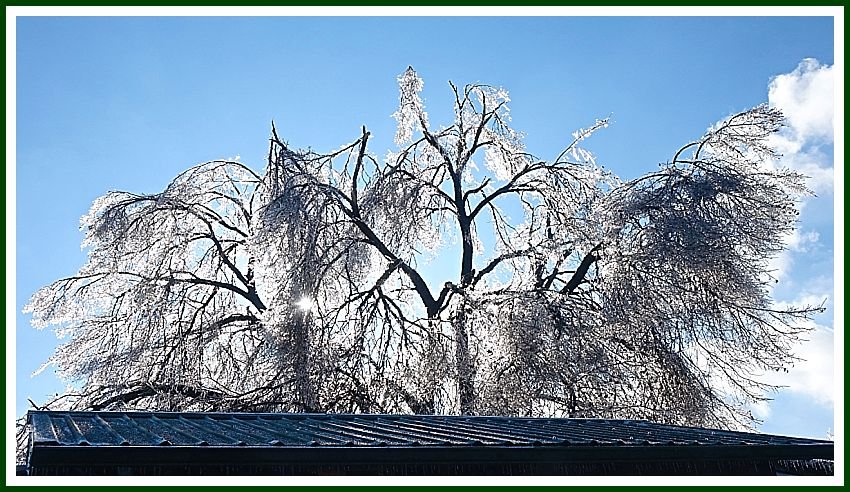
Here's the first post on the Great Willamette Valley Ice Storm of 2016. I've already shown the effect of the ice on my Sequoia and Larch Trees; Blue Spruce and Western Redcedar Trees; Noble Fir, Grand Fir, and Eastern White Pine Trees; two sets of Douglas-Firs, and Ponderosa Pines. I'll be posting three more ice storm photosets, with fruit trees, garden plants, and homestead miscellany. And then we'll have an ice storm party!
Hazel
Oregon's Willamette Valley grows most of the USA's domestic hazel nuts. The European Hazel trees (Corylus avellana) in my yard were all planted by squirrels and I have to fight them for nuts in the fall! Their branches really show how much ice was on every branch of every tree around! The hazels came through the storm fine because they are so flexible. The branches with the catkins that bloom in late winter bent over, but didn't break!
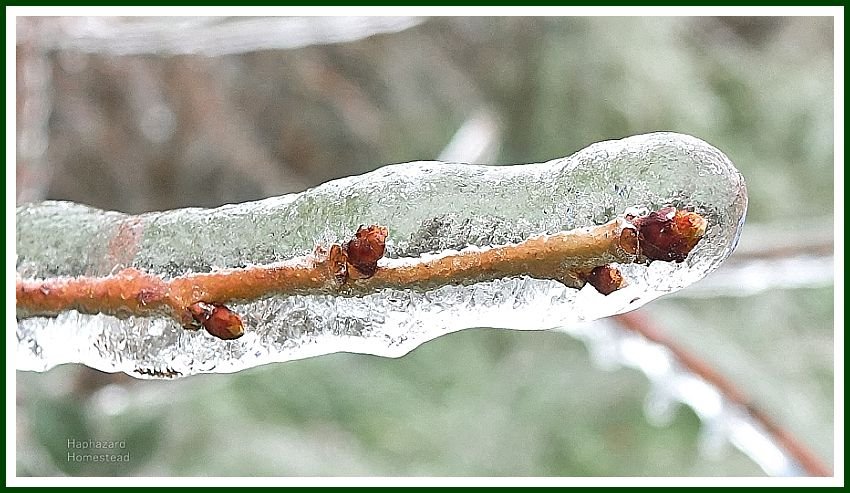
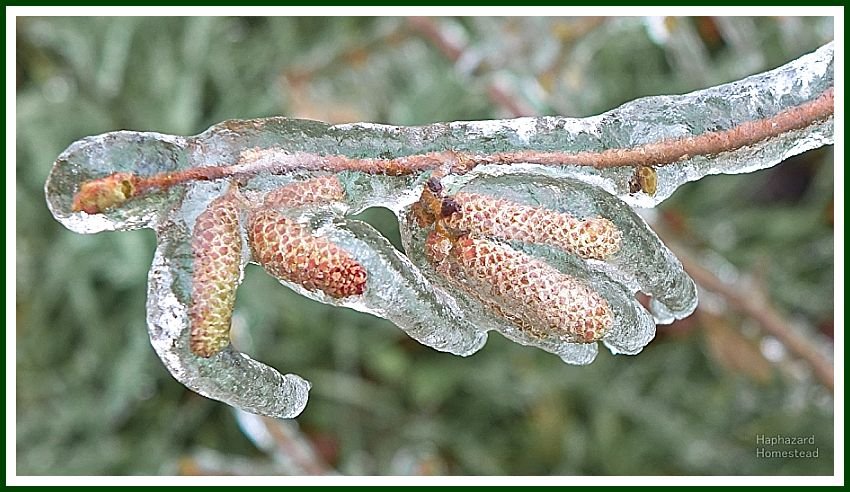
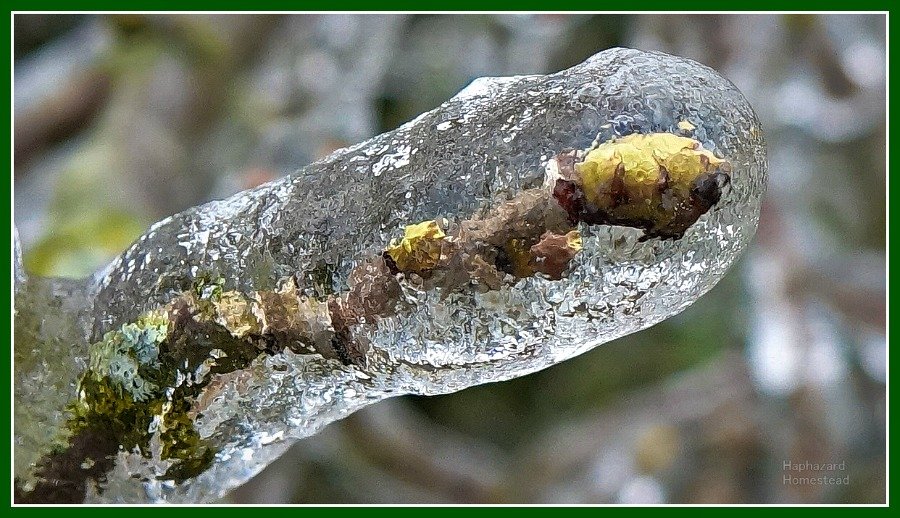
Walnut
The Willamette Valley is a great place for growing English Walnuts (Juglans regia), too. I harvested so many walnuts off this great tree for many years. But it was grafted onto Black Walnut (Juglans nigra) rootstock - standard practice back in the day. That causes problems down the road -- my poor tree died in 2015. I'll write more about that in a future post. So sad!
But the dead tree has been great for woodpeckers, so I've left it standing. The ice storm brought down a lot of branches! The cleanup has been a real effort, but there wasn't any real damage.
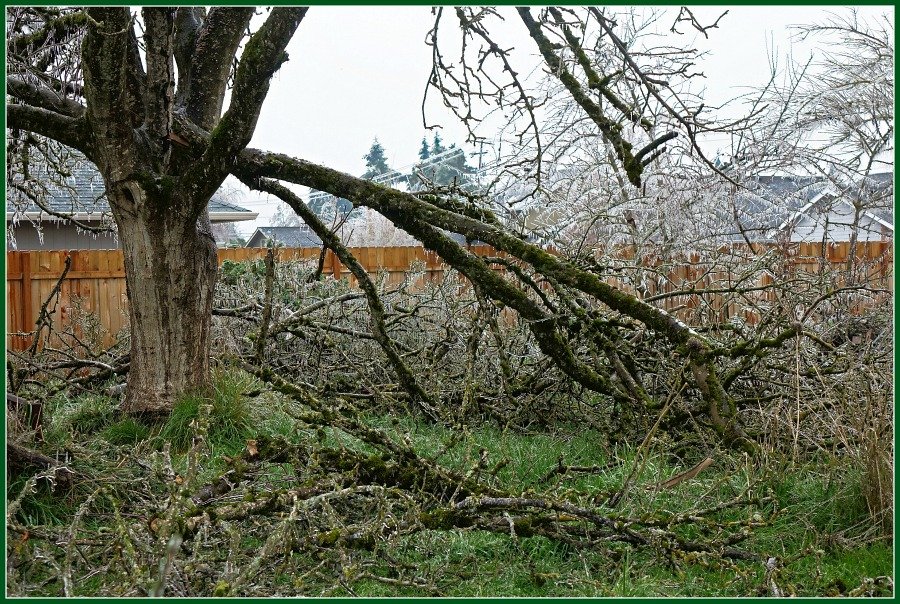
Birch
These two young River Birch (Betula nigra) are about 30 feet tall, with a lot of fine branches to collect a lot of ice weight. But look how flexible those trees are! They just bent over! The ice lasted for four days -- and those trees just stayed bent over like that. But as soon as the ice melted, they stood right back up -- no problem!
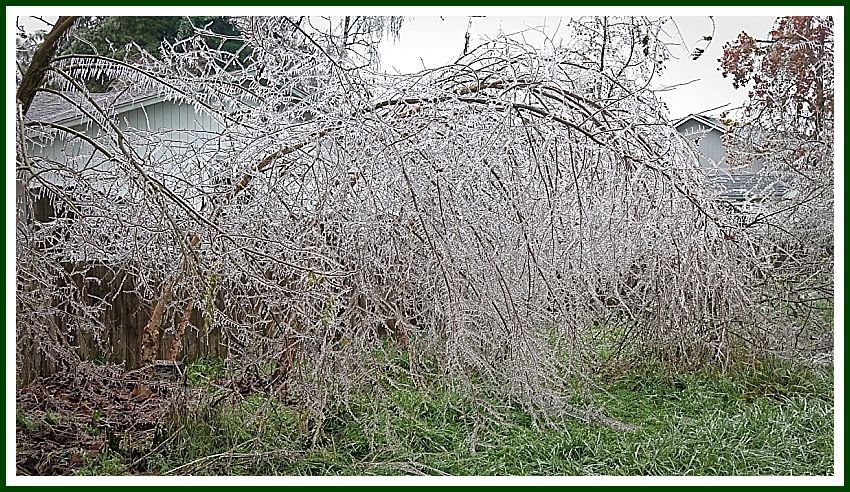
Holly
What about my English Holly (Ilex aquifolium) tree? It has leaves all winter. Will it bend of break?
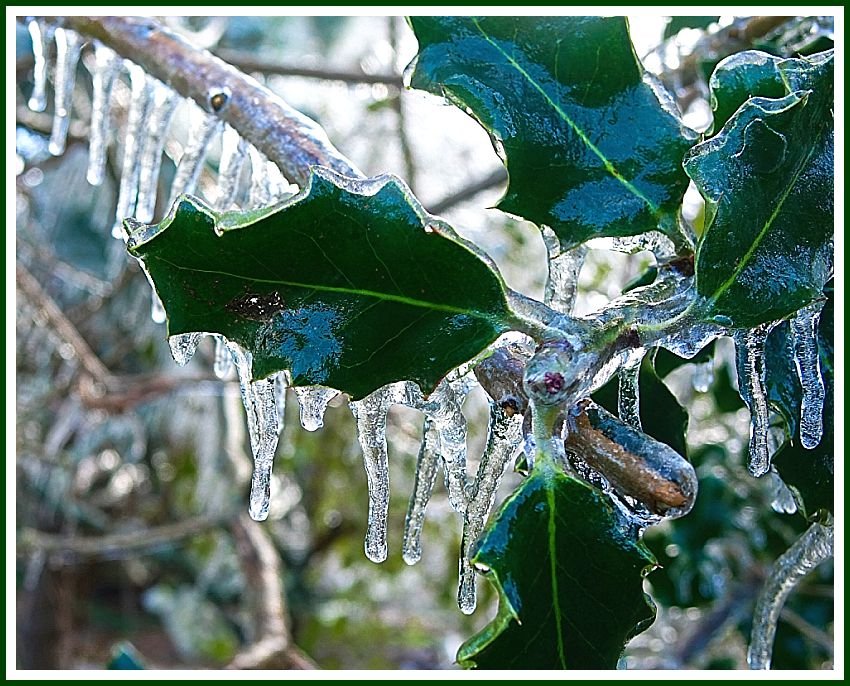
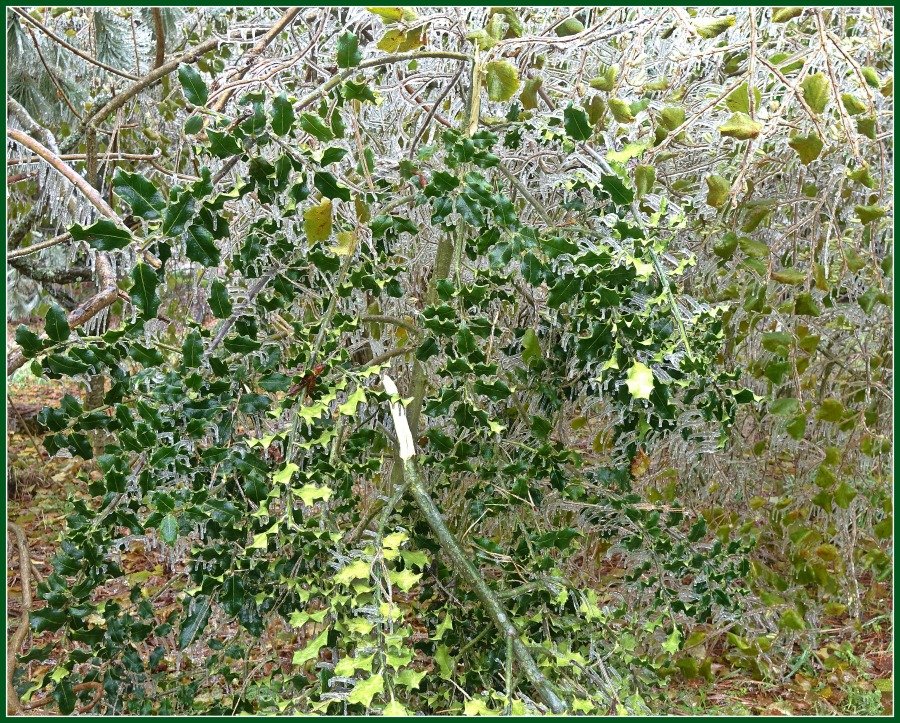
Oh, it broke alright! It turns out to be a brittle tree! Can you see where the top broke out, in the top middle of this picture? The top of the tree is lying down below, with the lighter undersides of the leaves showing.
I may take this tree out completely. English Holly trees can be invasive here in the Pacific Northwest. Or maybe I'll prune it and let a side branch grow into a replacement top. I haven't decided yet. Any ideas?
American Elm
My neighbor has an American Elm (Ulmus americana) tree that is huge! In the eastern US, these elms were decimated by Dutch Elm disease, a complex of fungi spread by bark beetles. But this tree was isolated from all that. It's probably the largest American Elm tree I will see in my life.
All elms are so vulnerable to ice storms! This massive tree was no different. I guess it could have been worse. One large branch fell off onto another neighbor's roof. Yes, that branch is resting on the roof of a good-sized house, in the lower right of the next picture! The whole neighborhood heard it fall! We all came out into the ice storm to see what had happened and to check that nobody was hurt.
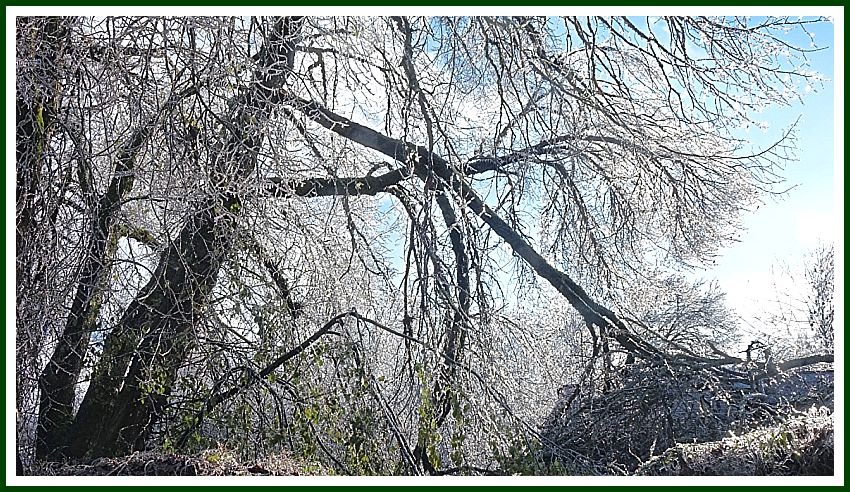
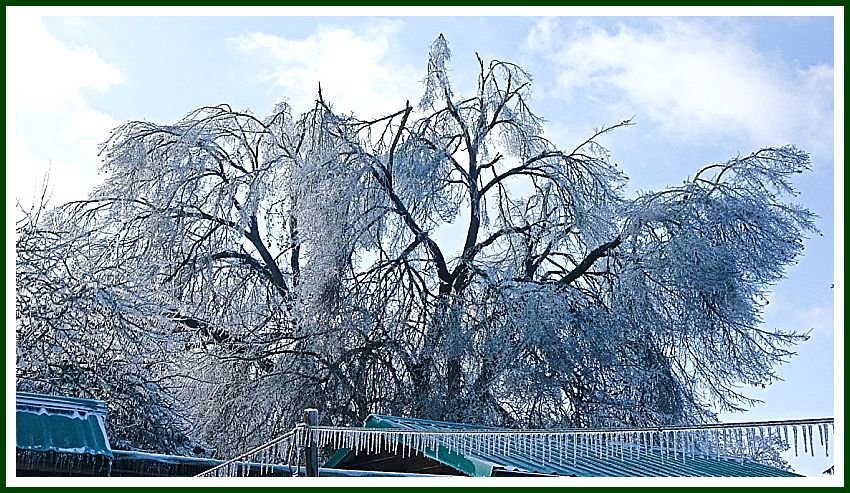
Elms are vulnerable because there are so many fine branches, way out on the ends of the big limbs. They are perfect for catching and holding massive amounts of ice. The top of the tree lost a lot of fine branches in the middle of its big crown. I hope those breaks heal pretty quickly, rather than letting any disease set in. But the damage could have been so much worse! All over town, trees smaller than this one split right in half, down to the roots!
What's nice is that nobody wants to take the tree out or trim it back. The two neighbors affected by the tree don't want to cut anymore off, except the limb on the roof. And their home insurance companies are fine with that. So I hope this magnificent old American Elm can enjoy the return of the sun with the spring and summer seasons, and fill its crown back in with plenty of new growth.

What About You?
Do you have any of these trees where you live? Have you ever seen a Birch tree bend over from ice or snow? Have you ever been through an ice storm? Have you ever had trees hurt by winter weather? I hope your winter is going great!
Other posts in this Ice Storm Series:
- The Great Willamette Valley Ice Storm of 2016
- Sequoia and Larch Trees
- Blue Spruce and Western Redcedar Trees
- Noble Fir, Grand Fir, and Eastern White Pine Trees
- Douglas-Firs 1
- Douglas Firs 2
- Ponderosa Pines
Follow me to see more ice storm photosets. There's only three left - fruit trees, garden plants, and homestead miscellany. Don't miss them! Because then we have an ice storm party! :D
** Haphazard Homestead **
*** foraging, gardening, nature, simple living close to the land ***

